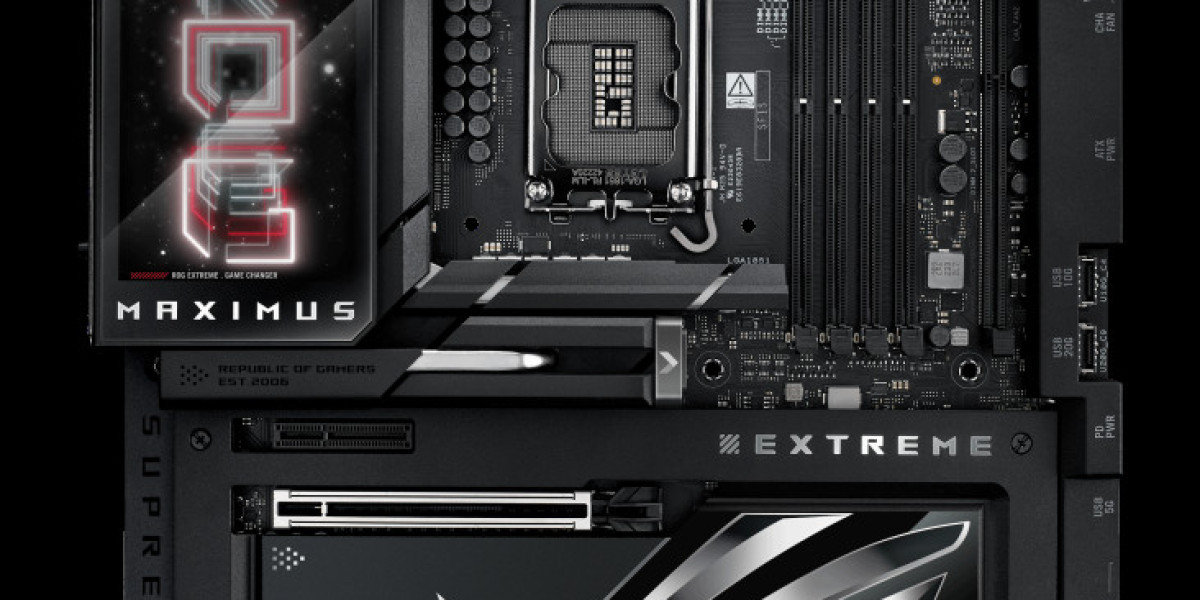When building or upgrading a computer, the first component most enthusiasts consider is the Motherboard. Often described as the “heart” or “spine” of a PC, it connects every part of the system, from the CPU and RAM to storage devices and peripherals. Without it, modern computing as we know it would not exist. While processors and graphics cards often steal the spotlight, the motherboard silently dictates compatibility, performance potential, and system stability.
In this article, we’ll explore how motherboards have evolved over the years, what roles they play in a computer, and what trends are shaping their future.
A Brief History of Motherboards
The earliest personal computers in the late 1970s and early 1980s didn’t resemble the sleek boards we recognize today. Instead, they used “backplanes,” which were simple circuit boards allowing multiple cards to be inserted for functionality. Each card handled specific tasks, such as processing, memory, or input/output.
By the time IBM introduced its first PCs, the idea of an integrated mainboard began to take shape. Rather than requiring separate cards for basic operations, the motherboard started incorporating memory slots, processor sockets, and controllers. This shift simplified design and made systems more user-friendly.
Over the decades, form factors also evolved. From bulky AT boards to the more compact and efficient ATX standard introduced in 1995, the industry moved toward standardization, which opened the door to greater compatibility across manufacturers.
Key Functions of the Motherboard
A motherboard is more than just a platform for connecting hardware. It plays multiple crucial roles in the performance and usability of a computer:
Component Integration: Connects the CPU, RAM, GPU, storage, and peripherals.
Power Distribution: Routes electrical power to all connected parts.
Data Communication: Facilitates communication between hardware through chipsets and buses.
Expansion Support: Provides slots for GPUs, network cards, and other devices.
Firmware Control: Houses the BIOS/UEFI, which initializes hardware and loads the operating system.
Without the motherboard’s ability to balance all these tasks, a computer would simply be a collection of disconnected parts.
Types of Motherboards by Form Factor
One of the most important considerations when selecting a motherboard is form factor. This determines not only the physical size of the board but also the number of features and expansion slots available.
ATX (Advanced Technology Extended)
Standard size for desktops.
Offers maximum expansion slots and features.
Micro-ATX
More compact than ATX but still versatile.
Fewer PCIe slots, but suitable for most home or office setups.
Mini-ITX
Highly compact, designed for small form factor builds.
Limited expansion but great for minimalist builds or HTPCs.
E-ATX (Extended ATX)
Larger than standard ATX.
Targeted at enthusiasts and workstations needing multiple GPUs and high RAM capacity.
Each form factor caters to specific needs, whether it’s portability, power, or professional use.
The Role of Chipsets
Chipsets act as the “traffic controllers” of the motherboard. They determine what CPUs are compatible, how many USB ports are supported, and whether advanced features like PCIe 5.0 or DDR5 memory are available. For example, Intel’s Z-series chipsets allow CPU overclocking, while B-series boards focus on affordability and mainstream performance.
Similarly, AMD’s chipsets range from entry-level A-series to enthusiast-grade X-series. Choosing the right chipset can significantly affect a system’s long-term upgrade potential.
Innovations in Modern Motherboards
Motherboards have come a long way from being simple connectors. Today, they include advanced features that enhance performance and user experience:
High-speed connectivity: PCIe 5.0, Thunderbolt, and USB4.
Wi-Fi 6E and Bluetooth integration.
AI-driven optimization tools in BIOS.
Advanced power delivery systems for stable overclocking.
RGB lighting and aesthetic customization.
These innovations reflect how motherboards have adapted to the growing demands of gaming, content creation, and professional computing.
Common Myths About Motherboards
Despite their importance, many misconceptions surround motherboards:
“A more expensive motherboard always improves performance.”
– Not true. While premium boards offer more features, actual performance often depends on the CPU and GPU.“Any CPU will work on any motherboard.”
– Compatibility is limited by socket type and chipset support.“Size doesn’t matter.”
– Form factor affects expandability, cooling, and even system stability.
Understanding these myths helps users make more informed decisions when upgrading or building systems.
Choosing the Right Motherboard
When selecting a motherboard, it’s important to balance present needs with future upgrade possibilities. Consider the following factors:
CPU Compatibility (socket and chipset support).
Memory Support (DDR4 vs. DDR5, maximum capacity).
Expansion Slots (PCIe lanes for GPUs or SSDs).
Connectivity Options (USB ports, Wi-Fi, Ethernet).
Budget and Use Case (gaming, office work, content creation).
This approach ensures the motherboard will not only support current hardware but also accommodate future upgrades.
The Future of Motherboards
Looking ahead, motherboards are set to become even more versatile and powerful. Trends suggest:
Integration of AI-based diagnostics for system health.
Greater reliance on wireless connectivity for peripherals.
More energy-efficient designs in response to sustainability goals.
Stronger emphasis on modularity to allow easier repairs and upgrades.
These changes will likely make PCs even more user-friendly, customizable, and sustainable.
Conclusion
The motherboard may not be the flashiest component in a computer, but it is undeniably the most vital. It dictates how all other parts communicate, determines system longevity, and often defines what upgrades are possible. From the bulky boards of the 1980s to the sleek, feature-rich designs of today, motherboards have truly evolved into powerhouses of modern computing.
As technology continues to advance, enthusiasts and professionals alike will find even more value in choosing the right motherboard for their systems. And with resources like qbit making access to components easier, the future of PC building is brighter than ever.







